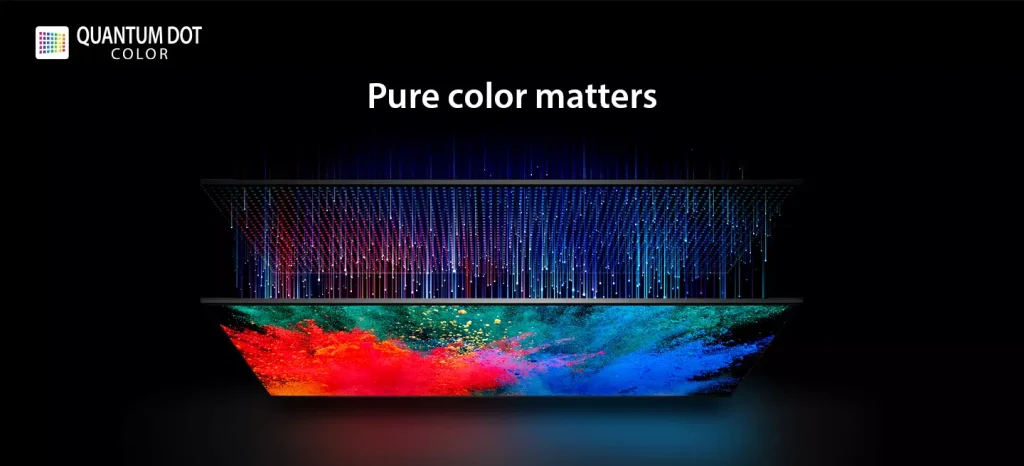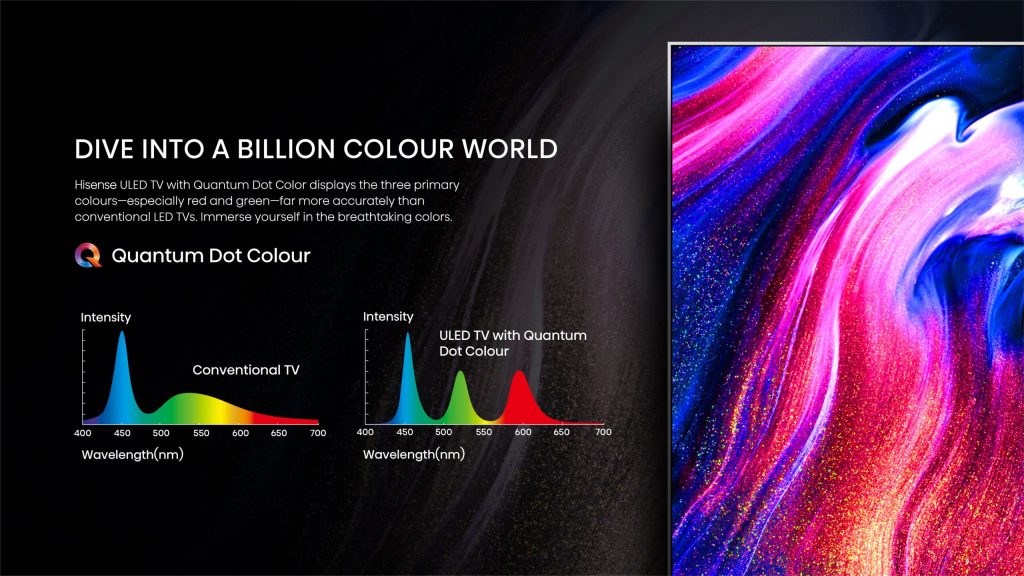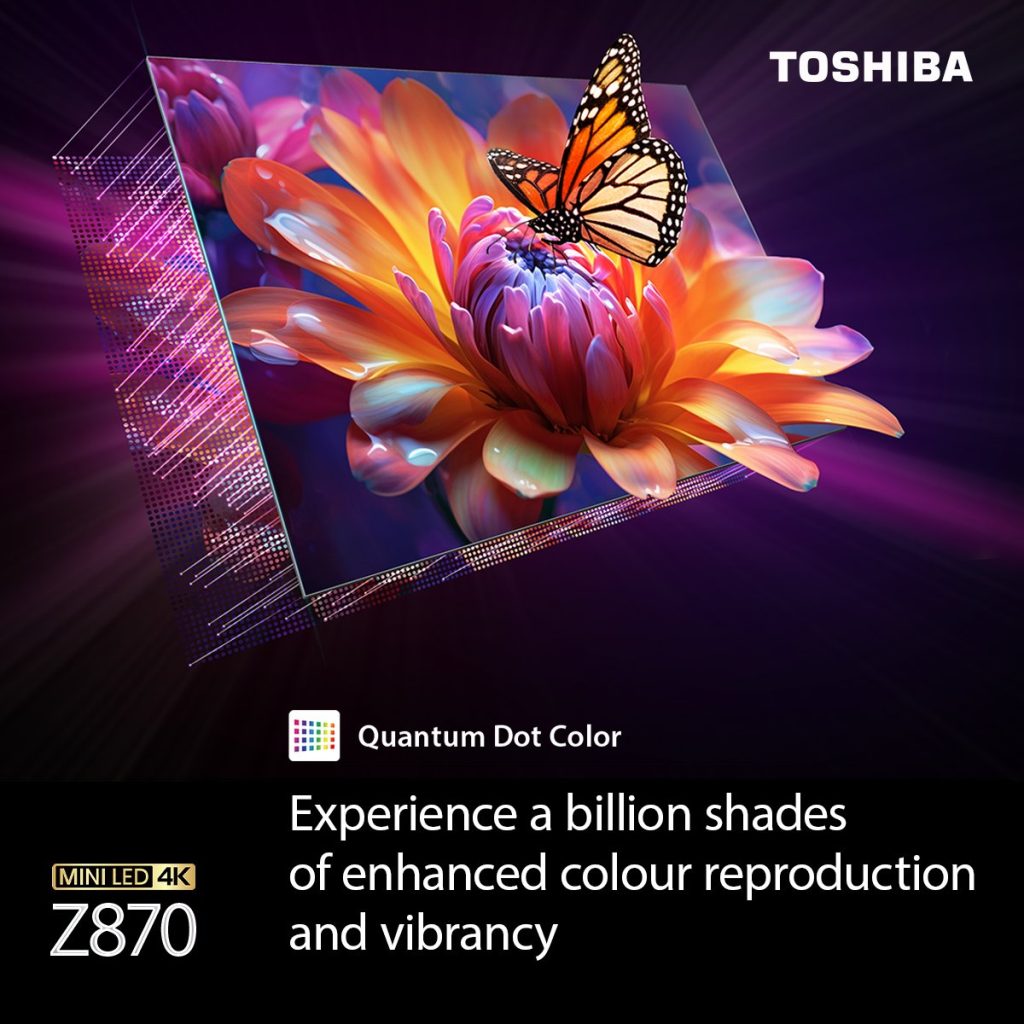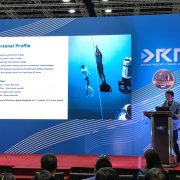
Color Revolution: Quantum Dot TVs and the Toshiba Experience
TLDR:
- What is Quantum Dots: Tiny quantum dots in QLED TVs enhance picture quality with precise colored light emission.
- Quantum Dots vs. OLED: Quantum Dots / QLEDs, using stable Quantum dots, excel in durability and color. OLEDs, relying on organic materials, face issues like image retention and burn-in.
- Comparative Insights: OLEDs lead in picture quality, while Quantum Dots shine in brightness, suitable for various environments and HDR content.
- The Future Beckons: Many TV manufacturer like Toshiba explores emissive Quantum Dots and direct-view Quantum Dot TVs, hinting at potential advancements.
Pros:
- Vibrant Colors: Quantum Dot tech ensures vivid and realistic colors.
- High Brightness: Quantum Dots are bright, ideal for well-lit spaces and HDR content.
- Durability: Stable Quantum dots enhance TV lifespan.
- Potential Future Tech: Research hints at advancements like emissive Quantum Dots.
Cons:
- Image Quality Variation: Quality may vary among Quantum Dots models.
- Burn-in Susceptibility: Quantum Dots are not entirely immune to burn-in.
- Complex Market Choices: Market offers numerous Quantum Dots models, making choice challenging.
- Future Tech Availability: Emissive QLEDs and direct-view Quantum Dot TVs are future possibilities, not yet commercially available.
Introduction:

In the ever-evolving landscape of television technology, Quantum Dot (QLED) TVs have emerged as a captivating option, leveraging the power of Quantum dots to redefine picture quality. This article delves into the essence of Quantum Dot technology, distinguishes it from OLED counterparts, and explores the pros and cons of QLED TVs.

Quantum dots, minute semiconductor materials at the nanoscale, are the magic behind Quantum dots colors TVs. These dots emit diverse colors based on their size, with larger dots producing warmer hues and smaller dots cooler tones. Quantum dots, operating at quantum-level speeds, ensure precise and efficient light emissions, resulting in a remarkable enhancement of overall picture quality.
The Enchantment of Quantum Dots Technology:

Quantum Dots TVs capitalize on Quantum dots’ unique properties, particularly their ability to achieve high luminance. Luminance, the brightness of the screen, plays a pivotal role in influencing various aspects of image quality. Quantum Dots excel in contrast ratio, enhancing High Dynamic Range (HDR) and delivering crisp, rich images. The incorporation of technologies like Direct Full Array further distinguishes Quantum Dots, offering a viewing experience that surpasses conventional TVs.

Quantum Dot vs. OLED: Deciphering the Distinctions:
The battle of Quantum Dots against Organic Light-Emitting Diode (OLED) TVs revolves around their underlying technologies. To help you understand the difference, check out the table below:
| Feature | Quantum Dots | OLED |
|---|---|---|
| Technology Type | Quantum Dot (Inorganic) | Organic Light Emitting Diode (Organic) |
| Picture Quality | High brightness, vibrant colors | Infinite contrast, deep blacks |
| Durability | Durable and stable | Susceptible to burn-in issues |
| Viewing Angles | Good viewing angles | Excellent viewing angles |
| Lifespan | Long lifespan | Limited lifespan, susceptible to burn-in |
| Market Variety | Numerous models from various brands | Limited number of brands |
| Cost | Varied, includes affordable options | Generally more expensive |
| Future Potential | Emissive Quantum Dots in research | Ongoing advancements in OLED technology |
Insights from Comparative Reviews:

In an era where TV technologies bear complex acronyms like Quantum Dots and OLED, consumers grapple with the dilemma of choosing between them. Comparative reviews have consistently favored OLEDs in terms of picture quality, with emissive Quantum Dots technology providing infinite contrast ratio and better uniformity. However, Quantum Dots boast brighter displays, offering advantages in well-lit environments and HDR content.
The Road Ahead: Future Prospects of Quantum Dot TVs:

As of now, OLEDs stand as the picture-quality champions, but the future promises exciting developments. Samsung’s exploration of direct-view Quantum Dot TVs, potentially matching OLED’s black levels and contrast, sparks anticipation. Emissive Quantum Dots TVs, eliminating liquid crystal layers, could offer enhanced power efficiency and color, but their commercial availability remains a few years away.
Quantum Dot: Revolutionizing Colors in Toshiba Z series TVs:

Toshiba Z series embraces Quantum Dot Color Technology, harnessing the brilliance of nanocrystals to redefine color reproduction. Unlike traditional LCD TVs, Quantum Dot Color eliminates the need for yellow phosphorus coatings, ensuring purer and vibrant colors. With over a billion true-to-life colors and advancements in contrast, motion, brightness, and detail, Toshiba Z series Quantum Dot TVs offer a premium yet affordable viewing experience.
Conclusion:
In the dynamic world of television technology, Quantum Dot TVs, epitomized by QLEDs, stand as a testament to the relentless pursuit of better picture quality. While OLEDs currently lead in certain aspects, the ongoing research and advancements in Quantum Dot technology signal a promising future. Whether it’s the vivid colors of Toshiba Z series series or the potential of emissive Quantum Dots, Quantum Dot TVs continue to captivate viewers and redefine the boundaries of visual excellence.
Also check out our review of Toshiba Z670M TV and Hisense U7K, TVs with high refresh rate and gorgeous quantum dots color.











